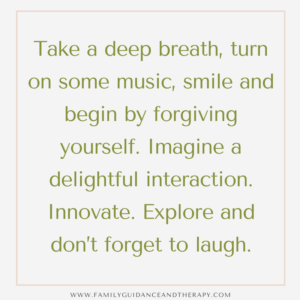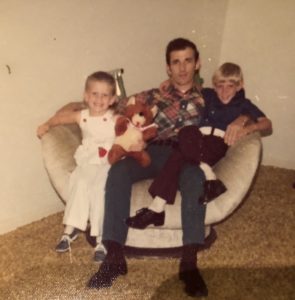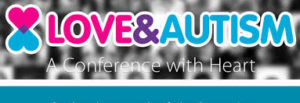This article was originally posted on Square Peg Foundation. You can read the original here.
We presented well – we were organized, funny, authentic. We got our audiences to laugh and to cry.
The therapists had great questions, asking for advice with a tricky client or for clarification on a particular point. Parents asked the harder questions:
“When my child is melting down – what can I do?”
“How can I stay sane and lean into my daughter’s obsession with her dolls?”
Despite some unexpected technology challenges, it went very well.
But our hostess, Jenny Palmiotto began receiving texts even during the presentation.
“But how do we DO Movement Method?”
People were eager to know how they could implement change right now.
It’s a frustration I’ve heard before.
And it’s fair. If you signed up for a cooking class, you would expect to leave the room with some skills to take home about chopping or choosing a cut of meat, about what temperature to pre-heat the oven and how long to cook the roast.
I never want a parent to leave a session or a training feeling guilty or even more tired. I want people to take away the information with a feeling of connectedness and a plan to incorporate some laughter and joy and understanding into their interactions with their child or with their clients.
I’ve watched parents take in the Horse Boy film and leave feeling defeated saying “Look, I can’t just go up a mountaintop and take my family to Mongolia. I guess I’m just not as good a parent as they are.”
And it makes me feel terrible.
Because it’s the opposite of what I was trying to convey – which means I may have failed.
Here’s the thing – parenting or therapy is not cooking. Cooking has an outcome – delicious and nutritious food that will not make you sick.
Working with anyone with neurological struggles is clearly more complicated. The goal is to help a person become as fully realized as a human as possible.
Movement Method is misnamed. It’s not a Method – it’s a framework. It’s a lens to view behaviors, motivations and the brain science of what is happening. It’s a lens to understand our own cultural upbringing and how we got to a place where we are applying techniques that don’t work – in fact, they create suffering.
Within this framework, we challenge and invite the therapist, teacher or parent to view a situation or a behavior or a goal through a different lens.
I’ll illustrate.
Let’s say the goal is to get a seven year old ME to eat different foods. I’d chosen for myself what I call “the beige diet” I liked french fries, oatmeal, chicken nuggets and white bread. We all know a growing body needs more protein, some greens perhaps. It’s distressing and oh so common.
that’s me, the queen of the beige diet and showing that I’ve never been able to keep my shoes tied.
My mom was a product of 70’s television and made lots of gooey casseroles that started with cans of Campbell’s soup – the sight of the label makes me ill to this day.
You know how this story plays out. Mom and Dad wouldn’t let me leave the table until I’d finished everything no matter how long it might take. It’s what they were told by the parenting experts. They were excellent parents and they were dedicated. Ergo – mealtimes were hell for all of us.
They were told that I was the middle child trying to get attention by being picky and now all the attention was on me. Nothing could be farther from the truth. I just wanted to leave the table and go and play outside – or be left alone in my room to read the books I loved.
Behavior – picky eater
Theory of function of the behavior – attention
Treatment: only offer non preferred foods with no other choices and eventually, survival instinct would kick in and I’d have to eat something at which point there would be much rejoicing and all of my attention-getting needs would be met (in reality, I’d just wait until everyone was asleep at night and I’d get up and fix myself a bowl of breakfast cereal)
Stressful, time-consuming, ineffective, punishing for the ENTIRE family with long-lasting negative results.
Now, let’s apply a Movement Method lens to the same situation.
What were my intrinsic interests? Outdoor play, reading.
How about we read “Bread and Jam for Frances” by Russell Hoban? I loved Frances the Badger. Like me, Frances was kind of dreamy and loved being outdoors. The descriptions of the food in the book are delightful.By reading a book with me, with a character I could identify with and then just leaving it alone – we could have had a tender and sweet family experience and given me the opportunity to quite literally come to the table on my own INTRINSIC interest – and avoided the compulsory, compliance-based approach we were raised with.
Take a moment to recognize that this kinder approach by acknowledging a 7-year-old’s interests isn’t some soft-handed hippy workaround to make the parents feel superior – it’s just WILDLY MORE EFFECTIVE and more humane for the whole family.
Remember the brain science! If cortisol, the stress hormone is evolutionarily designed to narrow focus – then your child’s most obsessive interests are an illustration of a stressed mind. The obsessive focus is a symptom of the stress and not the source of the stress.
Only when we are truly seen and accepted for a narrow interest (Frances’ obsession with bread and jam) does it naturally begin to ameliorate.
Our hostess for the trainings Dr. Jenny Palmietto of Family Guidance and Therapy http://www.familyguidanceandtherapy.com
Had something really beautiful to say. She talked about the “Otherness” of treatment. Meaning, when you see your clients, students etc as “other” you lose the humanity and thus the effectiveness of treatment. She illustrated that if it’s a treatment you wouldn’t do with your own children, you need to re-think it.
I would add that we need to further connect it and take a moment to tenderly reflect on our own behaviors as kids and how a compulsory, compliance-based treatment negatively affected us.
Understand that Movement Method is not a tool, it’s not a method, it’s a lens and a reference and an invitation to innovate. The self-compassion portion of MM is pivotal as we struggle to throw off the cultural norm of extrinsic rewards and compliance based systems – not for any other reason than because they do not work.
Take a deep breath, turn on some music, smile and begin by forgiving yourself. Imagine a delightful interaction. Innovate. Explore and don’t forget to laugh.
Let’s turn this post into a discussion. List a struggle YOU had, the more sensory based, the better and how shifting the lens to how a therapist, teacher or parent could have worked with your intrinsic interests to help you overcome.
Ready? Go!





